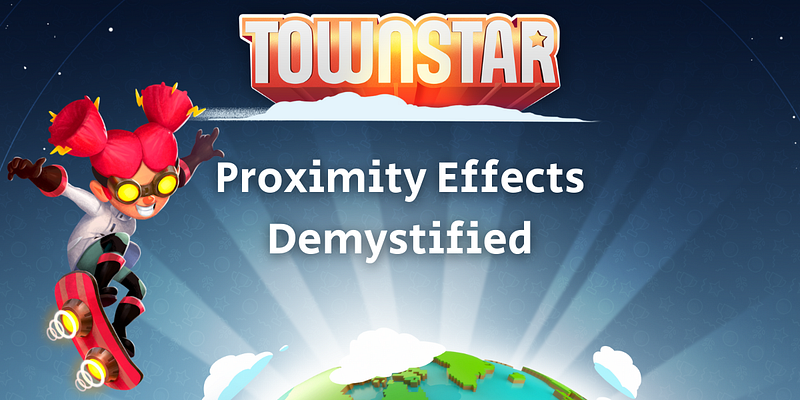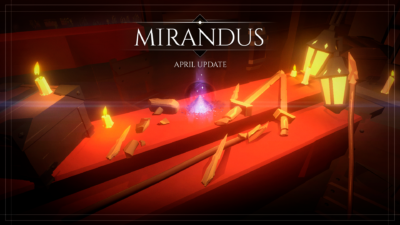If you’ve spent more than five minutes playing Town Star (and there’s a good chance you have if you’re reading this article), you’ve probably noticed that things aren’t always equal. Some fields require water, and others do not. Some crafts produce quickly while others drag. Sometimes you’ll see awesome green needles, indicating maximum efficiency, and other times you’ll see scary red needles that make you want to smash your keyboard through your screen.
It’s time to get the scoop on proximity effects. Figure them out, and not only will Town Star become even more enjoyable, but you’ll be better equipped to win and earn.
Sometimes called passive effects or area effects, proximity effects are one of the most important things to understand in order to become an effective Town Star player. This game is about synergy, organization and efficiency. It’s about building a complex machine that grows, produces, and crafts the things that will make you money in the most efficient ways possible.
Proximity effects are the ways in which certain buildings and geographies affect the area around them. Some of them are are positive effects, while others are negative and detrimental to your town’s efficiency. If you can master the placement of your buildings and fields in a way that maximizes the positive proximity effects while minimizing the negative ones, you’re well on your way to the realm of the Town Star elite.
Proximity Effect Shorthand
Before we start describing and explaining the various proximity effects, it’s important that we understand how they are expressed. There is a simple method of explaining how proximity effects work. It always works the same in Town Star, no matter the proximity effect. We call it the stairstep method.
If a particular building has a proximity effect of 4, here is a diagram of what that means.

A proximity effect of 4 means essentially that the first tiles adjacent to the building receive 4 of the effect. The next ring of tiles out receives 3, then 2, then finally, 1. Pictured in the diagram is the entire proximity radius of that building’s effect (whether positive or negative). Notice that diagonals are treated a little differently. The first ring of proximity effect includes all diagonals as 1 tile, but diagonally adjacent tiles are gradually removed from the effect radius.
Proximity Radius = 4 (in this example)
Now you know what we mean when we say that a certain building “provides 3 oil,” or that another one “casts 3 tiles of shade.”
Negative Proximity Effects
Let’s start with the bad news. These are the things you want to avoid the effects of whenever you can: The negative proximity effects.
A negative proximity effect is never universal. That means that no matter how much dirty pollution or shade are created by a building, its negative effects will only be experienced by certain specific units.
You may be confused now, wondering how you can possibly know which negative proximity effects negatively affect which buildings. This is more simple than you may think, and you can usually use common sense to solve that puzzle.
This poor little Wheat Field is clearly out of place around the Refineries and Power Plants. Because of pollution and shade, we’re seeing a red needle and long production time.
Buildings that require wind (Windmills, Wind Turbines and Wind Pumps) are negatively affected by wind block.
Buildings that require sunlight (Fields) are negatively affected by shade.
Shade and wind block are caused either by mountains, or buildings with height. The taller the building, the greater the shade and wind block it casts.
Pollution is created by industrial production buildings, and negatively affects fields in the same way as shade and wind block.
Compounding Negative Effects
Negative proximity effects work in the way pictured in the above diagram, but their symptoms are different than those of positive effects. Negative proximity effects lower the efficiency needle on fields and production buildings based on the effect radii of the buildings causing them.
For example, Windmills have a shade radius of 3 tiles. Is a Windmill is placed more than 3 tiles away from the nearest Windmill, production will be perfectly efficient and both Windmills’ needles will be in the green.
This is ideal placement, but I can’t keep it up forever.
However, if those Windmills are moved 1 tile closer together, then they begin to affect one another negatively with shade. Now, each of those Windmills will have 1 negative point against its perfect production, causing its timer to double from 30 seconds to 60 seconds.
This is not perfect, but still pretty good.
Finally, if you move each of those Windmills one step closer still, they will inflict upon each other the maximum negative proximity effect of -3 points. The result is two more doublings to the production timer, or a total of 240 seconds for each round of production.
I should avoid this type of placement for as long as I have room.
Positive Proximity Effects
Positive proximity effects are a lot more fun than negative ones. Many of the NFTs sold in the Town Star store offer positive proximity effects as a benefit. Sometimes we call these passive production benefits.
The simplest passive production benefit to explain is water. Fields are provided passive water when they are placed near natural water, such as a pond or a marsh. Each pond provides 2 water, which means that it provides 2 units of water to directly adjacent tiles and 1 to the next ring of tiles.
Wheat Fields require 3 units of water to grow wheat. In the example below, you’ll notice that the selected Wheat Field is 2 spaces away from one pond (1 passive water) and 1 space away from another pond (2 passive water).

I should definitely build a pond in the middle of that cluster of Wheat Fields.
Positive proximity effects are only applied to production buildings, such as Fields, Windmills, Chicken Coops, etc. A Water Facility (which makes industrial water drums) is another example of a production building, so it can also be supplied passive water when placed near ponds.
Other passive benefit units include Wheat Stands (which provide passive wheat for production in a Windmill or Feed Trough), Solar Panels (which provide passive energy to surrounding industrial production centers), and Water Pumps (which provide passive water drums) to industrial production buildings that require water.
There are even some NFTs that provide unexpected passive resources, such as the Haunted Mansion, which (depending on the piece) provides passive oil and perhaps pumpkins.

Passive pumpkins are produced by the Haunted Porch and delivered to the Silo by the Headless Horticulturist.
More Subtle Proximity Effects
There are a few proximity effects that have subtle effects which may be difficult to spot at a glance. We’ll give you a hint, but let you discover the details on your own. Pay attention to salty land that is next to oceans, and pay attention to the especially sandy land that is found in deserts.
Don’t forget that mountains cause a lot of shade. If you’re next to a mountain, you may be able to mine precious minerals from underground, but you’ll need to account for the 5 tiles of shade that the mountain always causes on an entire side of your town.
When you’re next to a river of fresh water, take full advantage of that water. It works exactly like a row of ponds, saving you a great deal of trouble watering your fields if you’re clever.
Some buildings even give both positive and negative proximity effects. Consider the Power Plant. It may provide a great deal of passive energy to surrounding buildings, but it also has a pretty wide pollution radius.
As you become the master of your Town Star domain, you’ll start to see everything in terms of proximity effects. The way things work together in a great web of causality is not only how the game works, but how the world works.
Hopefully this article has given you some good insight into the world of Town Star proximity effects and helped you to find greater strategy and depth in your game!





